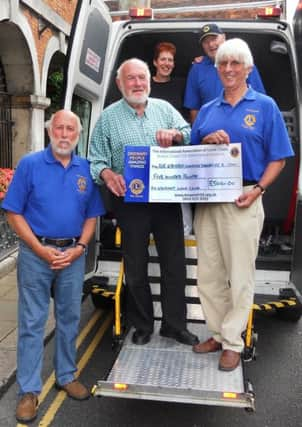Rural communities stillaffected by poor links


That is the claim being made by The Rural Services Network, an organisation devoted to safeguarding and improving services in rural communities across England.
They say the topic has never been bigger or more pressing with rural transport facing many threats - ranging from fuel costs through to the lack of public and community transport in many areas.
Advertisement
Hide AdAdvertisement
Hide AdThey recently set up the Rural Vulnerability Service; which aims to disseminate information about three key rural issues: fuel poverty, broadband and rural transport.
The Rye area has faced particular problems with train stopping services to stations such as Three Oaks, Doleham and Winchelsea being cut back to the bare minimum, causing communities to become more isolated.
Rail action group THWART is calling for the service to be restored.
The area also suffers from a bus service which has frequent break-downs and buses not turning up.
Advertisement
Hide AdAdvertisement
Hide AdThe situation would be worse if it were not for groups such as Rye Community Transport, which provides a flexible bus service to meet people’s needs, with runs to town centre shops and the Memorial Care Centre.
The Rural Services Network says changes to public transport subsidies make community-run initiatives increasingly important.
Already 200 organisations across the complete range of rural services are in membership with the Network, including local authorities, public bodies, businesses, charities and voluntary groups across the spectrum of rural service provision.
A spokesperson for the Rural Services Network said: “The Network exists to ensure services delivered to the communities of predominantly and significantly rural* England are as strong and as effective as possible.
Advertisement
Hide AdAdvertisement
Hide Ad“We are the only national network specifically focusing on this vital aspect of rural life.
Generally, access to services is lower in rural areas than it is elsewhere. For example, 52% of users in rural areas live within a short enough travel time of a GP’s surgery by foot or public transport that they are likely to make the journey, compared to 62% in urban areas.
“Unsurprisingly users in small, sparse rural areas generally have the lowest service accessibility; for example, 30% of users in sparse villages live within a short enough travel time to a supermarket that they are likely to make the journey, compared with 52% of users in less sparse rural towns.
“Being able to access key services by public transport is important not only in terms of benefiting from that service when it is needed, but also in terms of social inclusion. “
To find out more about the Rural Services Network visit the website rsnonline.org.uk.